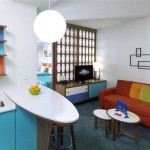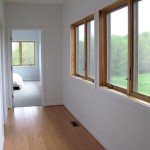What Is Color In Interior Design
In the realm of interior design, color reigns supreme as a powerful tool that can transform spaces and evoke a myriad of emotions. Understanding the intricacies of color theory is essential for creating interiors that are both aesthetically pleasing and emotionally resonant. Let's delve into the world of interior design and explore the fascinating role of color.
The Color Wheel: A Guide to Harmony
The color wheel is a fundamental tool in interior design, offering a visual representation of the relationships between colors. It consists of three primary colors (red, yellow, and blue), three secondary colors (orange, green, and violet), and six tertiary colors (combinations of primary and secondary colors). The wheel provides a framework for understanding color combinations and harmonies.
Color Psychology: Connecting Hues to Emotions
Beyond its aesthetic appeal, color has a profound impact on our emotions. Different hues can elicit specific feelings, creating a unique ambiance in any room. Warm colors like red, orange, and yellow tend to evoke feelings of energy, passion, and warmth, while cool colors like blue, green, and purple promote tranquility, relaxation, and freshness.
Color Schemes: Creating Balanced Palettes
Developing a color scheme is crucial for creating a cohesive and visually appealing interior. There are several common color schemes to consider, each offering its own distinct character.
- Monochromatic: Shades of a single color, creating a harmonious and sophisticated look.
- Analogous: Colors that are adjacent to each other on the color wheel, resulting in a subtle and pleasing effect.
- Complementary: Colors that are opposite each other on the color wheel, creating a striking and attention-grabbing contrast.
Color Value and Intensity: Shaping the Mood
Color value refers to the lightness or darkness of a hue, while intensity refers to its saturation. These factors play a crucial role in determining the mood and ambiance of a space. Light colors can create a sense of spaciousness and airiness, while dark colors can evoke a sense of intimacy and coziness. High-intensity colors demand attention, while low-intensity colors recede into the background.
Conclusion
Color in interior design is an art form that requires a keen eye, an understanding of color theory, and a deep appreciation for the power of hues. By embracing the principles of color harmony, psychology, schemes, value, and intensity, designers can create spaces that not only look stunning but also evoke specific emotions and enhance the overall experience of living and working.

The Psychology Of Colors In Interior Design Foyr

How To Use Color Psychology In Interior Design Nativa Interiors
How To Add Color Your Home According Interior Designers Business Insider

How To Use Color Psychology In Interior Design Nativa Interiors

Choosing The Right Colours For Interior Design Of Your Home Fineline

15 Home Interior Design Tricks To Choose A Perfect Colour Palette

The Psychology Of Colour In Interior Design 2024 Designcafe

Playing With Colors In Traditional Interior Design Avaato Miami Based Firm

Color Psychology Interior Design

How To Color Coordinate A Room Without Losing It Cellularwindowshades Com








